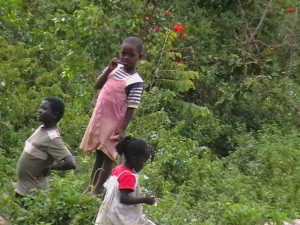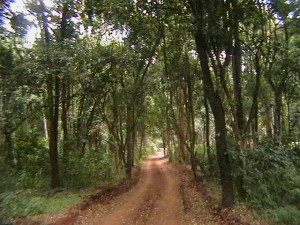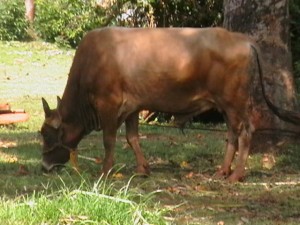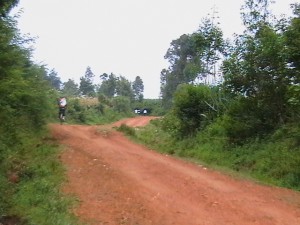By Okoth Oluoch
“Finding the home is so straightforward that it is almost impossible to miss it, even if you wanted to.”
Those were my father’s words after he had just given the directions to one of his friends who were to come and pay him a visit, and of course he wasn’t far from the truth at all.
It’s common knowledge to all, including those coming there for the first time that the homestead is in an open place. It’s situated in Rongo, Migori district along the Kisii Migori Highway, a region that is best known for its sugarcane farms.
From Kisii town, one travels on buses, which are readily available for a small fee of K Sh 40 for about fifteen miles for about an hour, then branches left onto a murram road at the Kamagambo Teachers College junction. The road, rather dusty during the sunny period, is pretty OK.
Kamagambo, the greenest and certainly the best known of the Rongo locations has attracted admirers for centuries-indeed this was why the first missionaries to visit the country fell in love with it and eventually decided to set up the Teachers training college here.
Home to a number of Luo legends, including one of the first black Africans to be elected to the LEGCO, (current parliament) Commissioner Isaiah Owalla,
The air is often scented with herbs and wildflowers that proliferate on this area and the mountainous interior is further adorned with slender cypress trees, cider and villages.
In fact, so varied and colourful is the landscape and so welcoming are the people that this is one of the best Rongo villages to explore, especially on foot.
The timeless rhythm of agricultural life has changed little and verdant, fertile valleys-such as the great vale of Kira-still yields a rich harvest.
On either side of the road are huge plantations of sugar cane, further proof that the area really depends on it for their survival.
Whether driving along this road, or going on foot,, it is almost impossible to miss noticing the cyclists, popularly known in the area as Ngware, a Luo word meaning ‘famine’ (word has it that the thing that actually drove men to go and start the business of ferrying goods and passengers using bicycles was a long famine that was experienced in the year 1982 so that famine was dully named Ngware.).
The cyclists’ continuous waving further attesting to the villagers welcoming hearts. After about a kilometre, on your left, there stands the homestead, just next to the road.
Those developed resorts that there are, are well contained and the most parts of the area is fringed with stunning mountainous scenery, golden rocks, and clear blue skies.
It may be true that many of the established tourists centres are to the west of the region, like the Las jona Complex which would easily pass for a three star hotel, just three miles away, but it is also here that you will find some of the most beautiful and unsullied stretches of land, and delightful villages beneath the slopes of the Tonye hill-the areas highest peak (500m)
A traditional fence made up of euphorbia trees surrounds the home; somehow, my father has never ceased to believe in its ability to protect homes.
There’s a small walkway just before one reaches the gate, on either side of which there are banana plantations. It’s not rare to find them heavy-laden with ripened fruit, or even falling unheeded into the garden when there is no child at home to harvest them.
The gate, just like any other traditional one, is made up of trees tied together by sisal, again an art my father acquired from his father, my grandfather. Once inside the compound, one can not fail to notice the well trimmed grass (a species that I and my younger brothers and sisters had to walk five miles, and bare footed, across two stream to go and fetch from the market), or even the nice smell of the fruits that usually comes from the orchard, just next to the home.
In the centre of the home stand one iron- roofed house with roof painted red and cemented walls directly facing the gate.
On either sides are is a grass thatched house, The right one popularly known among the natives as Simba or the house where grown up children sleeps before they eventually build their own houses and the left one being the kitchen.
Of the two, the kitchen is more conspicuous because of its condition.
Situated nearer to the main house than the other house for obvious reasons (the locals believe that food should not take a lot of time between the kitchen and the main house for fear of it being bewitched by some evil spirits) It s condition has since deteriorated due to age and it is since been slanting rather heavily on one side.
A closer look at the houses and one realizes that they are not as new as they look from a distance. The cemented floor is rather rugged, and some of the red paint has peeled off the walls leaving behind small patches. The house ceiling is in a rather good state – save for the cobwebs that are occasionally removed, but still make their way back.
Just before you enter the main house (the iron roofed one), to your left, you will notice the cattle boma. Though it easily goes unnoticed during the day when the cattle are out in the field, in the evenings it gets busy when they are brought back by my father and occasionally my young brother whenever he is on holiday from school, a chore he utterly detest but still does anyway.
A few minutes into the home and one can smell the stench coming from the chicken hutch- not so overpowering during the evening, but rather strong during the day, but after some hours, the smell lessens and eventually disappears.
I think people simply get used to it. The hutch stands to the right of the main house and looks rather odd with thorny branches scattered around, supposedly to stop jackals from making their way in.
Behind the hutch lies the dog’s kennel, which for the better part of the day is kept locked –supposedly to make the dog to be cruel and antisocial, the qualities less admired among human beings and Bingo, the huge cruel brown dog is actually only left free to roam and protect the home late into the evening.
Infact it is almost impossible to enter the home unaccompanied at night if one is a stranger in the home. Off course it only needs an assurance that the ‘stranger’ is up to no harm from a familiar face and Bingo immediately becomes what it is to majority of us, a friendly social dog, something that has led me to question a number of times if being locked for the whole day is achieving any effect.
The home is literally surrounded by papaw trees, and during the ripening season the otherwise quiet compound is filled with the noise of scuffling birds that come to devour the fruits. “There is nothing wrong with birds eating the papaws if they find them nice,” was my father’s reply when I tried to convince him to cut down the trees, as it was only the birds benefiting from them.
I think over the years he has got rather attached to them so much that he seems to forget that they have managed to survive this far without his help, and they will definitely survive without the help.
Inside the house, the first thing one notice is the long row of photographs on the wall. My father has made it a tradition to put up a photograph of each and every child of his, and of late each and every grandchild, and he has quite a number of them. Then there are calendars, some dating back to the fifties when he was still in school.
All the calendars are marked with special dates – from the children’s birthdays to days when important people died.
During the day the place is rather deceptively quiet, but it explodes into life in the evening: cattle lowing at the boma, goats bleating, and the shrill sounds of cocks welcoming the night… and on top of all that noise, my father’s voice, ordering people about here, giving instructions there.
At this point, the home is almost dark; there is no electricity yet, but my father has always believed that someday it will be connected. As the night progress, the noises cease, and soon all there is to hear is my grandmother’s quiet voice, skilfully narrating stories about heroes and legends, rising high above the now increasing shrills from the cocks and the occasional hooting of the owls.
The grandmother herself carries almost as much mystery as the village itself. Slim and looking slightly younger than her real age, (which is also unknown to us except that she was born she was around thirty seasons before the country gained its independence) She was brought up in a very traditional society where she managed to master the ways of the people of the area to date, traditions which she follows almost religiously.
For instance until today, we, her grandchildren do not know how many they were in her family, where she came from, according to her, they count goats, donkeys, and acres of lands, not children since that will be inviting death to consume them.
The stories, mostly about the village’s heroes and Heroines goes on until all the children drop asleep – of course after a meal always prepared by grandmother herself. And this marks the end of the children’s day.
But not for the adults, for Kamagambo literally explodes to life in the evenings. Earlier during the day, the major activities in the area are mostly children playing hide and seek among themselves while their parents are either involved in communal activities like going to help one another to till their farms, or the men going hunting for the antelopes which are quite many in the area. But come the sunset and the village goes merry.
Traditional live bands, which the locals are very much known for take centre stage. This is mostly on the weekends though during harvesting period it is literally everyday.
Bands churning out songs in praise of the local heroes, and in praise of the gods for bringing a bumper harvest fill the ears, food is plenty and the celebration goes on for approximately one month, from the time the new moon appear to the time it disappear for this mark the end of harvesting, and the imminent start of the ploughing time.
The areas obvious beauty has actually shaped its history for it has been scrambled for by a couple of groups, both wanting a share of its uniqueness.; from former Ugandan dictator president Idi Amin Dada who, after paying the country a visit in the early 1970s, got so much impressed by the western region of the country that when he went back, he demanded that a good chunk of the country, including Rongo, be taken back to the Ugandan side claiming that it originally belonged there, to numerous frictions decades ago between the neighbouring communities, the Luo’s and the Kisii’s who both wanted to have control of the area.
Rongo town, the region’s capital best illustrates these many occupying influences, from the numerous Ugandan dishes served in literally all the major town’s hotels, including Matoke, the Ugandan’s staple food, Kisii businesses, characteristic fast talking and their round houses, and the native Luo’s lifestyle and restaurants playing their characteristic live bands completes the picture.
Both an hour’s drive from the place are Lake Victoria, the world’s largest fresh water lake and a sight to behold, with its unpolluted stretches of coastline beckoning, And Ruma National Park, the largest and the most diverse National Park in the western part of the region, with over a hundred species of wild animals, and a perfect gate away place for the family.
The delightful old town, wedged between vast sugarcane plantations and the steep hill of Tonye, is perhaps more reminiscent of where cultures come together than even the old town of Mombasa.






I truly appreciate this blog post.Much thanks again. Will read on…
Good one. Make me want to travel south and visit this place. Keep writing, keep entertaining us.